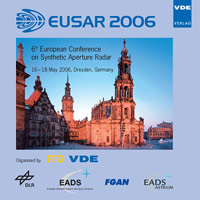First Results for Ultra-High Resolution Tower-Turntable ISAR and Tower SAR at 94 GHz
Conference: EUSAR 2006 - 6th European Conference on Synthetic Aperture Radar
05/16/2006 - 05/18/2006 at Dresden, Germany
Proceedings: EUSAR 2006
Pages: 4Language: englishTyp: PDF
Personal VDE Members are entitled to a 10% discount on this title
Authors:
Essen, Helmut; Hägelen, Manfred; Brauns, Ralf; Konrad, Günter; Sommer, Rainer; Wahlen, Alfred (FGAN-FHR/mhs, Neuenahrer Straße 20, D-53343 Wachtberg, Germany)
Abstract:
There are many applications of millimetre wave radar sensors, which rely on the knowledge of high resolution scattering centre distributions. To derive those, the method of Inverse Synthetic Aperture Radar (ISAR) is employed. The target under test is positioned on a turntable while the radar is illuminating the target from a tower. Existing experimental instruments have approached resolutions of about 10 to 20 cm. The effort described here, however, should exceed this limit to be able to test the necessity of extremely high resolutions in radar images. The range resolution of radar is determined by its instantaneous bandwidth. At higher millimetre wave bands even moderate relative bandwidths are equivalent to high absolute bandwidth. For the development of related processing algorithms an experimental, polarimetric 94-GHz radar has been developed using a FM/CW waveform with a bandwidth of 4000 MHz resulting in a resolution better than 4 cm. The radar has been tested using the method of Inverse Synthetic Aperture in tower-/turntable geometry. To be able to derive ISAR images with the full theoretically achievable resolution, a fast polar reformatting process was developed and tested with the data. The paper describes the hardware approach, which is based on high performance monolithically integrated GaAs components and most recent signal generation and processing hardware. The ISAR algorithm is discussed and representative examples of highly resolved ISAR images shown. In addition first results of a SAR experiment with this newly developed millimetre wave radar on top of a moving tower against stationary targets are presented.


